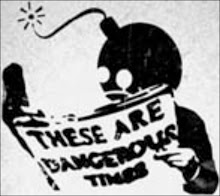(Click to enlarge)
To get to the headquarters of the Cedar Grove Institute for Sustainable Communities, visitors have to navigate a lengthy dirt road past white picket fences, grazing horses and a variety of outbuildings in various stages of disrepair. Set in a one-room former Primitive Baptist church on a 43-acre spread in rural Orange County, N.C., the institute holds a collection of old, ergonomically incorrect wooden desks and metal filing cabinets. The only signs of modernity are computers atop the desks.
Institute founders Allan Parnell and Ann Joyner, who live in a modest country house a stone’s throw from this office, are dressed in their everyday summer attire, T-shirts and shorts. But when they begin pulling maps off printers, Parnell and Joyner step decidedly out of the last century. “Our daughter tells people we work for the CIA, because what we do is so hard to describe,” Parnell says, only half-joking.
Joyner displays a series of maps showing the Coal Run neighborhood, a handful of streets located just outside the city limits of Zanesville in central Ohio. The first map provides a simple baseline, showing the city water plant and the boundary between the city and Coal Run, a part of Muskingum County. The second map adds water lines, which serve only the northern half of Coal Run. Successive maps add the residences in Coal Run, note which residences have water and which don’t, and break down their occupancy by race.
The last map puts all the data together, and the picture suddenly comes into sharp focus: Almost all the white households in Coal Run have water service, while all but a few black homes do not...
Continue reading










No comments:
Post a Comment